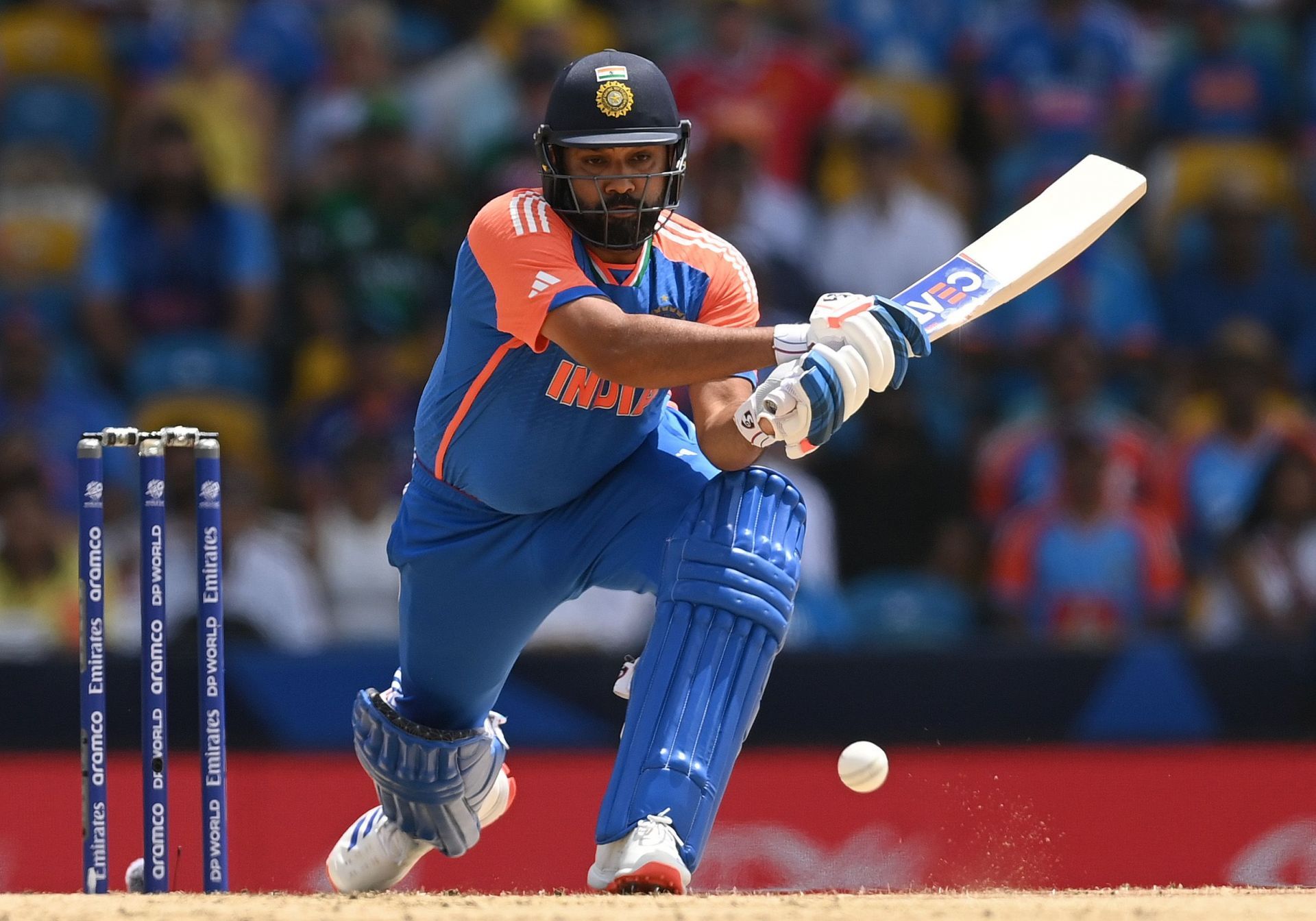
Rohit Sharma T20I dismissal modes overview: how many times has he been bowled, LBW and caught?
Indian captain Rohit Sharma, one of the finest batters in the world, has stamped his authority across all three formats of the game. While he is seen at his imperious best in ODIs, he has also been excellent in the shortest format: T20Is.
Red-ball cricket, where he had a rather late start compared to his peers, is where his numbers dip a tad. However, he has been a revelation for India ever since he was asked to open the innings and promoted up the order by former captain MS Dhoni.
In the 61 Tests that he has played so far, Sharma has accumulated 4179 runs at an average of 43, which is quite impressive for someone plying their trade at the top of the order. He has 12 centuries and 17 half-centuries in this format.
In ODIs, where he reigns supreme over almost every opponent in the world, his tally of runs is a jaw-dropping 10,866 at an average of almost 50. He has also scored 31 centuries and 57 half-centuries in this format of the game.
What is most impressive about Sharma's resume in ODIs is the strike rate at which he goes about his business. Although he seemed a tad recalcitrant when playing in the middle order, he has been extremely aggressive as an opener. His strike rate of 92.43 speaks tonnes about this attitude.
However, it is his strike rate of 140 in T20Is that holds him among the best batters in the world today, and where he certainly enjoys himself the most, despite having called it a day. He is the leading run-scorer in the world in this format, having amassed 4,231 runs in the 151 innings he has played.
Compatriot Virat Kohli is the second in the list after him with 4,188 runs. Although they have both retired from this format of the game, they continue to dominate the charts. Although Sharma has a lowly average of 32 in this format, he also scored five centuries and 32 half-centuries, which is extremely impressive.
Rohit Sharma's career spanned 17 years in T20Is
Rohit Sharma, who called it quits from T20Is after the ICC Men's T20 World Cup held in the West Indies and USA earlier this year, needs no introduction when it comes to his T20I record. He has hit a stunning 383 boundaries and 212 sixes in this format.
His career spanned 17 years in this format after making his debut as a wide-eyed 20-year-old in India's victorious T20 World Cup title win in the inaugural competition in South Africa in 2007.
In his T20I career, Sharma has been bowled out only on 24 occasions, which is a rather low number for a player who has played at the international level for as long as he has. In total, getting bowled constitutes just 18.2 percent of his total modes of dismissals.
LBWs, on the other hand, were rarer in his T20I career than bowled-out dismissals. He got out LBW on just 11 occasions, which is brilliant for a player who liked to plant his front foot down and try to whip the ball away to the on side. This constitutes just 8.3 percent of his total modes of dismissals.
Quite naturally, the mode of dismissal that used to frequent Sharma the most was getting caught. In T20Is, players try to clear the fence as much as possible, and this usually results in them mistiming their shots and getting caught in the deep.
Sharma got out caught on 75 occasions, which translates to 56.8 percent of his total modes of dismissals. He also got out nicking the ball to the slip cordon or other fielders while trying to dominate the bowlers.
This is also how he got out caught in his final T20I appearance, mistiming a sweep shot to Heinrich Klaasen at square leg off a wide, tossed-up delivery to left-arm spinner Keshav Maharaj of South Africa.
Sharma got out nicking the ball behind to the keeper on 11 occasions in T20Is, which translates to about 10 percent of his career's dismissals. This is a given as he used to open the innings on most occasions and come up against swing bowling of the highest kind.